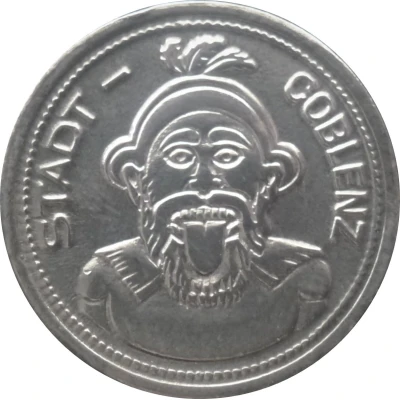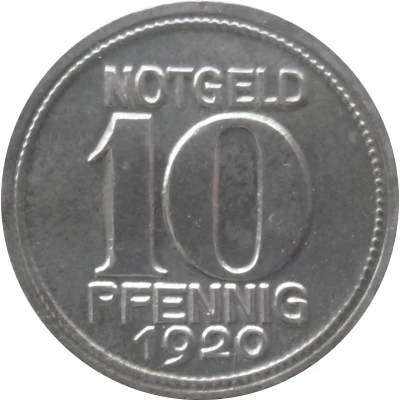10 Pfennigs - Coblenz
1918 year| Iron | - | 20.2 mm |
| Issuer | City of Koblenz (Prussian province of Rhine) |
|---|---|
| Type | Standard circulation coin |
| Year | 1918 |
| Value | 10 Pfennigs (10 Pfennige) (0.10) |
| Currency | Mark (1914-1924) |
| Composition | Iron |
| Diameter | 20.2 mm |
| Shape | Round |
| Technique | Milled |
| Orientation | Coin alignment ↑↓ |
| Demonetized | Yes |
| Updated | 2024-10-04 |
| Numista | N#200501 |
|---|---|
| Rarity index | 91% |
Reverse
Legen surrounding denomination centered
Lettering:
KRIEGSGELD 1918
10
✶ PFENNIG ✶
Edge
Plain
Comment
Issuing authority: [Stadt, Rheinprovinz]Interesting fact
The 10 Pfennigs - Coblenz 1918 coin was issued during a time of economic turmoil in Germany, known as the "Inflationary Period" (1914-1923). During this time, the value of the German mark (the national currency) dropped significantly, leading to a period of hyperinflation. As a result, many Germans turned to alternative forms of currency, such as local emergency currencies like the 10 Pfennigs - Coblenz 1918 coin. This coin was issued by the City of Koblenz in 1918 and was made of iron, which was a more durable and valuable material than the paper notes that were in circulation at the time. Despite its value, the coin was not widely accepted and was eventually replaced by the German Papiermark. Today, the 10 Pfennigs - Coblenz 1918 coin is a rare and valuable collector's item, serving as a reminder of a tumultuous period in German history.

